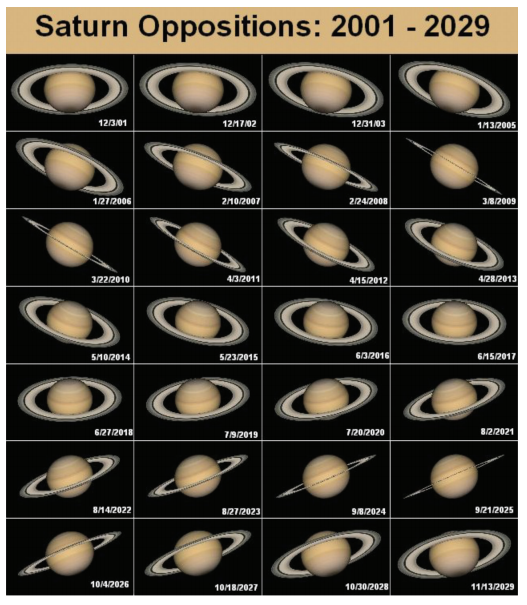- Practical exercise 1 Making models of the objects of the Solar System
- Practical exercise 2 Model the motion of Earth around the Sun
- Practical exercise 3 What are the distances of planets from the Sun?
- Practical exercise 4 What are the planets’ sizes?
- Practical exercise 5 When observing from Earth, why can we see the tilting of Saturn’s rings?
- Practical exercise 6 Model the motion of Uranus around the Sun and describe how seasons change for var-ious hypothetical positions of an observer on the „surface“ of Uranus.
Practical exercise 5: When observing from Earth, why can we see the tilting of Saturn’s rings?
Aids:
• models of the Sun and Saturn (see section a)
Instructions:
1. Place the model of the Sun in the middle of the table. Place the model of Saturn about 20 cm from the Sun.
• Determine approximate position of Earth in this model.
• Demonstrate Saturn orbiting the Sun. Remember to keep the direction of Saturn’s axis in space as it is in the case of Earth.
• Use the charts to determine how long in reality Saturn orbits the Sun.
• Explain why we can observe the tilting of Saturn’s rings from Earth (see picture).
• Determine the period of tilting of Saturn’s rings.
2. Use your assumption and experiments similar to section b), exercise 3 to conclude if seasons change on Saturn. If yes, try to estimate in what chronocentric latitudes the change happens (chronocentric latitude is the equivalent of Earth’s latitude on the surface of Saturn).
• Based on the experiment with Saturn orbiting the Sun and rotating about its axis at the same time, find if polar days and nights exist on Saturn, as they do on Earth.
• With an experiment find out how wide is the band around Saturn’s equatorial, in which the light from the Sun – before hitting the surface – goes through the plane of rings.

(source: CC BY-SA 3.0, https://commons.wikimedia.org/w/index.php?curid=174680)


